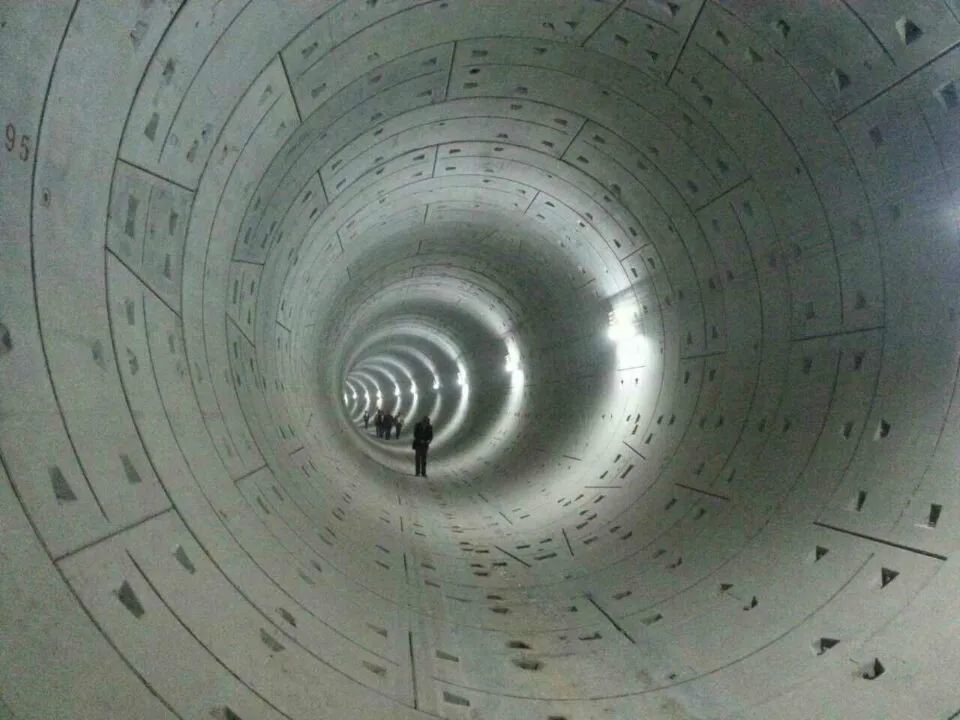Building a Riverside Railway to Create a High-Speed Rail “Corridor”
Once completed, Chongming–Taicang Yangtze River Tunnel will mark the end of Chongming Island's isolation from the high-speed rail network.
At the confluence of the Yangtze River and the East China Sea near Chongming Island, the “Linghang” shield tunneling machine is steadily advancing toward Taicang, Jiangsu, at a pace of 16 to 28 m per day. Construction of the Chongming–Taicang Yangtze River Tunnel, a critical segment of the Shanghai–Nanjing–Hefei section of the Shanghai-Chongqing-Chengdu High-speed Railway, is in full swing. Once completed, the tunnel will mark the end of Chongming Island's isolation from the high-speed rail network. At that time, travel from Chongming to Baoshan Station in Shanghai via Taicang will take as little as 17 minutes.
This is no ordinary tunnel: with a total length of 14.25 km and a single-head excavation stretch of 11.3255 km, it will become the longest single-head bored tunnel in the world. Designed for speeds of up to 350 km/h, it will be the fastest underwater tunnel globally. Moreover, at a depth of 89 m beneath the Yangtze River, it will be the deepest sub-river tunnel under the Yangtze.

As a major infrastructure project, the Chongming–Taicang Yangtze River Tunnel serves as a testing ground for intelligent tunnel construction in China. The “Linghang” shield tunneling machine, responsible for the excavation, is equipped with an intelligent tunnel construction system featuring a “super brain” capable of independent thinking, intelligent analysis, and autonomous decision-making. This enables autonomous tunneling and smart construction with on-site monitoring but no manual operation.
In the segmental lining prefabrication stage, the construction team established China’s first fully digital segment production line, achieving full-process automation from rebar processing and automatic surface finishing to segment steam curing. For transportation, a long-distance intelligent transport system has been deployed. In the installation phase, the team developed an intelligent assembly robot for curved segments, capable of one-click automated assembly with a precision control of up to 0.5 mm. “From intelligent sensing and tunneling to intelligent management and control, projects like the Chongming–Taicang Yangtze River Tunnel mark China’s entry into the era of intelligent tunnel construction,” said Xu Weiqing, project manager of the tunnel at China Railway Tunnel Group Co., Ltd.

As of the end of February, 81.61 billion yuan had been invested in the Shanghai–Nanjing–Hefei High-Speed Railway.
Looking at the full length of the Shanghai-Chongqing-Chengdu High-speed Railway, segments such as Hefei–Wuhan, Wuhan–Yichang, Chengdu–Dazhou–Wanzhou, the central section of the Chengdu–Chongqing line, and Yichang–Fuling are all progressing in an orderly manner. The Dabie Mountain Tunnel, the longest tunnel on the Hefei–Wuhan section, connects Hubei and Anhui provinces.
Traversing numerous environmentally sensitive areas—including Shizifeng Provincial Forest Park and Nature Reserve in Hubei, Dabie Mountains National Geopark, and Tianma National Nature Reserve in Anhui—the construction team adopted environmentally conscious measures such as minimizing the number of inclined shafts and adding wastewater treatment stations to reduce the environmental impact to the lowest possible level.
As one of China’s most important east–west high-speed rail corridors, the Shanghai-Chongqing-Chengdu High-speed Railway stretches approximately 2,100 km, linking the Yangtze River Delta, Triangle of Central China, and Chengdu–Chongqing city clusters. It serves as a key pillar for strengthening the Yangtze River railway network.
Currently, over 600 trains run daily between Shanghai and Nanjing, averaging one train every 2.7 minutes during operating hours. On average, more than 2 million passenger trips are made on Yangtze River Delta railways every day. By the end of 2024, the region’s total railway mileage had exceeded 15,000 km, including 7,700 km of high-speed rail. With steady progress in the Along-the-Yangtze high-speed rail corridor, the vision of a “Yangtze River Delta on Tracks” is accelerating toward reality.
A responsible official from the National Development and Reform Commission introduced that the Along-the-Yangtze Railway Corridor is a crucial axis in the comprehensive multi-dimensional transportation corridor of the Yangtze River Economic Belt, and it holds significant importance for ensuring smooth economic circulation and promoting regional coordinated development. The construction goal is to have the high-standard, large-capacity, multi-path along-the-river high-speed rail corridor essentially completed by 2028, with the high-speed rail arteries running in both east-west and north-south directions along the Yangtze River.
By then, the high-speed rail connection between Shanghai and Chongqing, as well as between Chengdu and Shanghai, will operate at a full-speed of 350 km/h, reducing the travel time from about 11.5 hours and 10.5 hours respectively to approximately 7 hours and 5 hours. This will result in closer connectivity between the cities of the upper, middle, and lower reaches of the Yangtze River Economic Belt, and the major cities within these regions. The Yangtze River Delta and the Chengdu-Chongqing Economic Circle will essentially be integrated into a high-speed rail network, fostering stronger regional cooperation.




